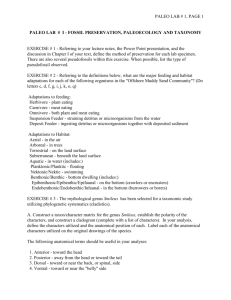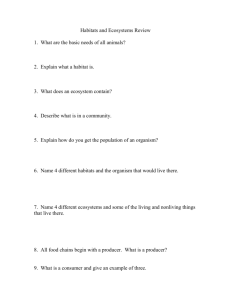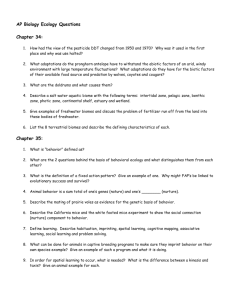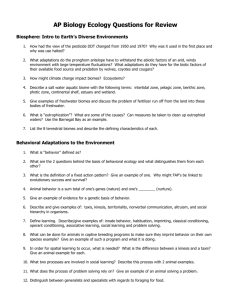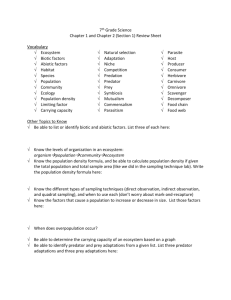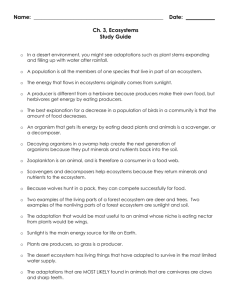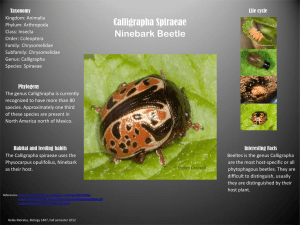Local Biodiversity Research
advertisement
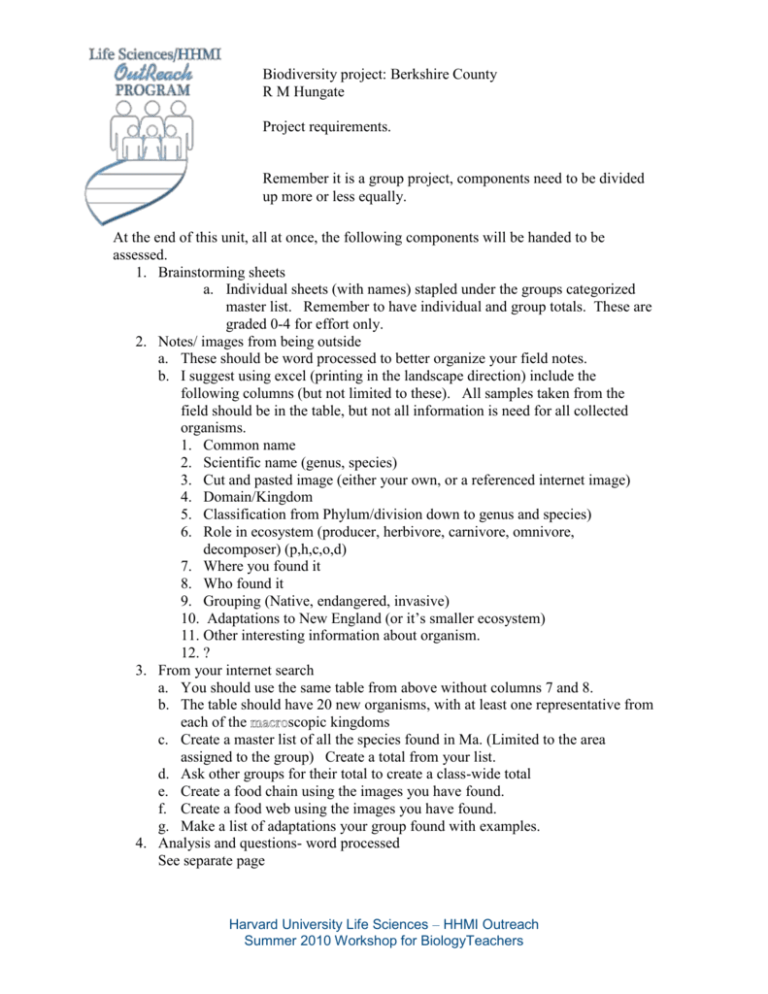
Biodiversity project: Berkshire County R M Hungate Project requirements. Remember it is a group project, components need to be divided up more or less equally. At the end of this unit, all at once, the following components will be handed to be assessed. 1. Brainstorming sheets a. Individual sheets (with names) stapled under the groups categorized master list. Remember to have individual and group totals. These are graded 0-4 for effort only. 2. Notes/ images from being outside a. These should be word processed to better organize your field notes. b. I suggest using excel (printing in the landscape direction) include the following columns (but not limited to these). All samples taken from the field should be in the table, but not all information is need for all collected organisms. 1. Common name 2. Scientific name (genus, species) 3. Cut and pasted image (either your own, or a referenced internet image) 4. Domain/Kingdom 5. Classification from Phylum/division down to genus and species) 6. Role in ecosystem (producer, herbivore, carnivore, omnivore, decomposer) (p,h,c,o,d) 7. Where you found it 8. Who found it 9. Grouping (Native, endangered, invasive) 10. Adaptations to New England (or it’s smaller ecosystem) 11. Other interesting information about organism. 12. ? 3. From your internet search a. You should use the same table from above without columns 7 and 8. b. The table should have 20 new organisms, with at least one representative from each of the scopic kingdoms c. Create a master list of all the species found in Ma. (Limited to the area assigned to the group) Create a total from your list. d. Ask other groups for their total to create a class-wide total e. Create a food chain using the images you have found. f. Create a food web using the images you have found. g. Make a list of adaptations your group found with examples. 4. Analysis and questions- word processed See separate page Harvard University Life Sciences – HHMI Outreach Summer 2010 Workshop for BiologyTeachers

